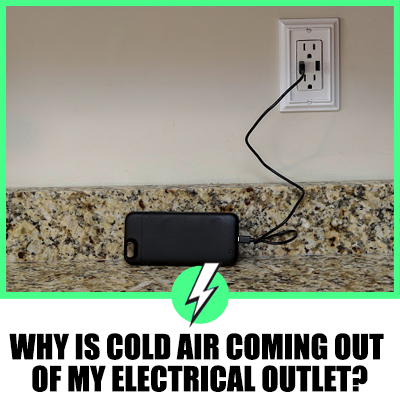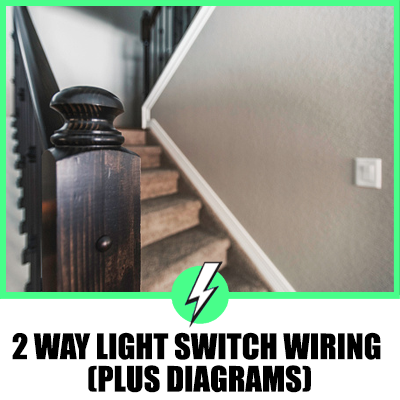Why Your LED Lights Glow Dim When Switched Off & Solutions
Noticing your LED lights emitting a faint glow even after being turned off can be both intriguing and bothersome.
This phenomenon, often perplexing to many, is not uncommon and stems from a few key factors. From the inherent characteristics of LED technology to the nuances of your home’s electrical system, understanding the root causes can empower you to address this issue effectively.
Well, we’ll be going over:
- What are the primary reasons behind the dim glow of LED lights when switched off?
- How does the residual electricity in your home’s wiring contribute to this phenomenon?
- In what ways does the capacitance inherent in LEDs play a role in their afterglow?
- How can the technology behind LED bulbs contribute to their faint glow even when turned off?
- What steps can you take to tackle this issue and ensure your LEDs turn off completely?
Let’s dive in.

Contents
Why do LED Lights Glow Dim When Switched Off?
You might have noticed your LED lights emitting a faint glow even when you’ve switched them off. This is not just a unique occurrence but a common issue many homeowners experience.
Residual electricity in your home’s wiring can cause this. Unlike traditional bulbs, LED lights require minimal power to illuminate. This minor leftover current is enough to make your LED lights glow dimly.
Another reason for this phenomenon is the design and technology of the LED bulbs. LED lights operate on very low voltage and can be sensitive to even minimal current.
If there’s a slight leakage of voltage in the switch or circuit, your LED lights can pick up on this and glow.
Understanding these causes helps in troubleshooting the ghostly glow of your LED lights. It’s intriguing to see how advancements in technology, such as the high efficiency of LED bulbs, bring along unique challenges.
Residual Electricity in Wiring
When you’ve noticed your LED lights glowing dimly even after you’ve turned them off, it’s often due to residual electricity. This is a fairly common occurrence, stemming from the modern design of your home’s electrical wiring.
Essentially, what’s happening is a small amount of electricity continues to flow or is stored in the wiring, even when the switch is off.
LED lights require significantly less power to operate compared to traditional bulbs. This means even minimal levels of leftover electricity can be enough to cause them to emit a faint glow.
The phenomenon is particularly noticeable in homes with outdated wiring or where the electricity does not have a direct path to dissipate.
Key reasons for this include:
- Capacitive coupling, where electrical cables run parallel to each other for long distances, can induce a voltage in an unpowered wire.
- Switches installed on the neutral wire instead of the live wire leave a small current flowing through the circuit.
Understanding this cause is crucial in identifying potential solutions to mitigate the glow.
Capacitance in LEDs
Capacitance, a key term in the realm of electronics, describes the ability of a component to store an electrical charge. You might not think of your LED lights as something that can “hold” electricity, but in reality, they can.
This characteristic plays a significant role in why LEDs emit a faint glow even when turned off.
In your home, wiring and switches aren’t just conduits for electricity; they also act as capacitors to a certain extent. When a switch is turned off, the LED’s capacitance allows it to store a small amount of this residual electrical energy.
Since LEDs require very little power to illuminate, this stored energy is often enough to cause a dim glow.
The phenomenon is more pronounced in certain conditions:
- Longer wiring runs increase capacitance, enhancing the effect.
- High-quality LEDs with better components might store energy more efficiently, inadvertently contributing to the glow.
Understanding capacitance in LEDs is crucial in identifying measures to mitigate the unwanted light. It’s not just about the LED itself, but also how your home’s electrical system interacts with these energy-efficient bulbs.
Technology Behind LED Bulbs
When you’re delving deep into why LED bulbs continue to glow even when they’re turned off, it’s essential to understand the core technology that powers them.
LEDs, or Light Emitting Diodes, operate quite differently from traditional incandescent bulbs. At their heart, LEDs function by allowing electricity to flow through semiconductor materials, which then emit light.
This process is not only more energy-efficient but also contributes to the longevity of the bulbs.
Semiconductor materials are key in this process; they’re what enable the LED to produce light with minimal energy. Unlike incandescents that waste a lot of energy in the form of heat, LEDs keep cool, which adds to their efficiency and lifespan.
However, this efficiency comes with a quirk. The very nature of the materials used and the way LEDs are designed can lead to the phenomenon of residual glow.
The semiconductors, along with the wiring and switches of your home, have a degree of capacitance. This means they can hold a charge for a certain period.
It’s this stored energy that can cause your LEDs to emit a faint glow even after they’ve been switched off, revealing an intriguing, if sometimes inconvenient, aspect of their design.
Understanding the ins and outs of LED technology not only helps you tackle the issue of residual glow but also enhances your appreciation for the advancements in lighting technology that LEDs represent.
Tackling the Issue
When you notice your LED lights glowing dimly after being switched off, it’s a sign that a little troubleshooting and adjustment are needed. There are several steps you can take to address this issue and ensure your LEDs turn off completely.
Firstly, start by checking the wiring in your lighting circuit. Faulty wiring or incorrect installation may cause a small amount of electricity to leak into the LEDs, causing them to glow.
Ensuring the wiring is correctly installed by a professional can often solve the problem.
Another practical solution is to invest in quality LED bulbs that are specifically designed to prevent residual glow. Manufacturers are aware of this issue and have developed bulbs that minimize or eliminate the phenomenon.
For those with dimmer switches, the issue might lie there. Dimmer switches, especially older models not designed for LED technology, can cause LEDs to receive a residual current.
Replacing your dimmer switch with one that is compatible with LED bulbs can quickly resolve the issue.
Lastly, adding a bypass capacitor or a Zener diode across the switch terminals can help. These components can block the residual voltage that causes the LEDs to glow, ensuring they turn off entirely.
However, this should be done by a professional to prevent any risk of electrical issues.
By understanding the underlying causes and exploring these simple solutions, you can effectively tackle the issue of your LED lights glowing when turned off.
Conclusion
Tackling the dim glow in LED lights when they’re off is simpler than you might think. With the right approach, you can ensure your LED bulbs function flawlessly, without any unwanted afterglow.
Whether it’s upgrading your dimmer switches, opting for specific LED designs, or incorporating simple electronic components, the power is in your hands.
Remember, a little effort goes a long way in enhancing your home’s lighting efficiency and ambiance. So, don’t let a minor glitch dim your lights’ performance or your spirits.





